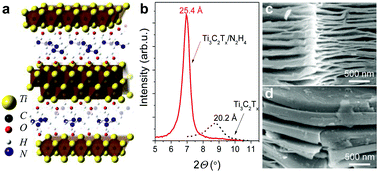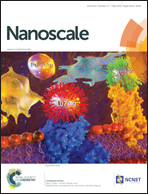The effect of hydrazine intercalation on the structure and capacitance of 2D titanium carbide (MXene)†
Abstract
Herein we show that hydrazine intercalation into 2D titanium carbide (Ti3C2-based MXene) results in changes in its surface chemistry by decreasing the amounts of fluorine, OH surface groups and intercalated water. It also creates a pillaring effect between Ti3C2Tx layers pre-opening the structure and improving the accessability to active sites. The hydrazine treated material has demonstrated a greatly improved capacitance of 250 F g−1 in acidic electrolytes with an excellent cycling ability for electrodes as thick as 75 μm.


 Please wait while we load your content...
Please wait while we load your content...